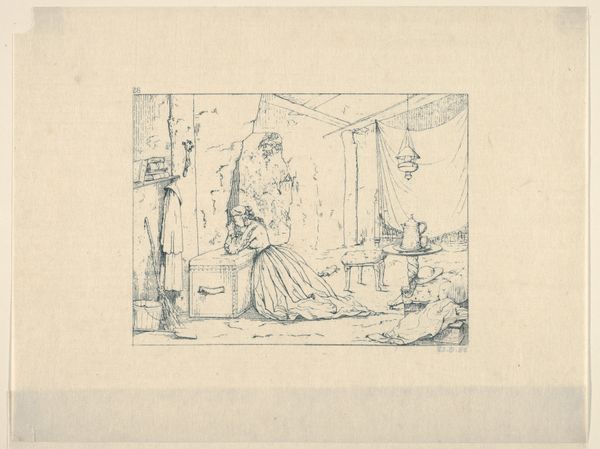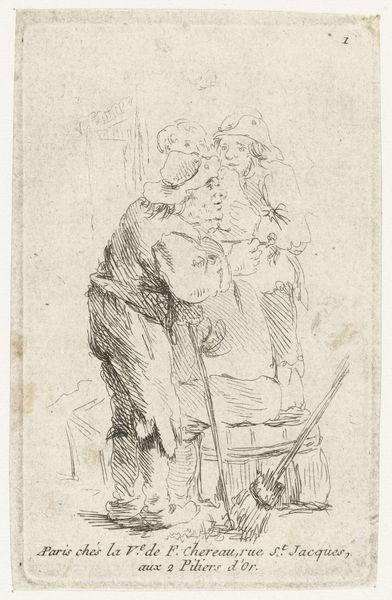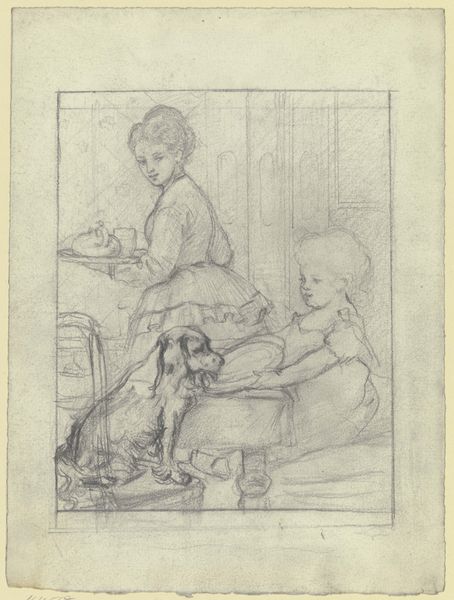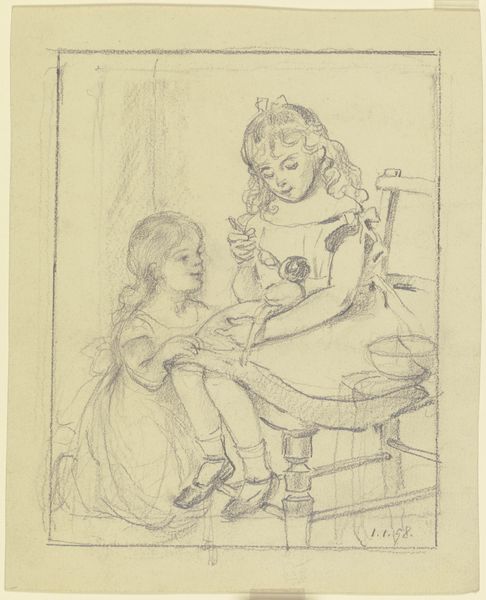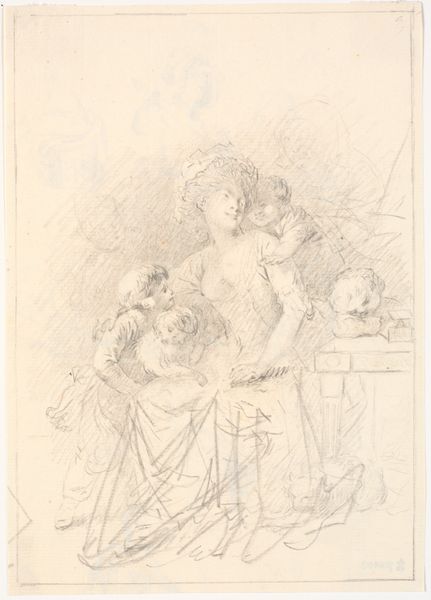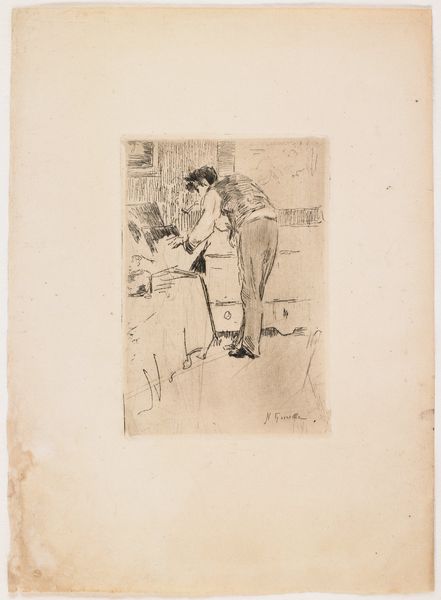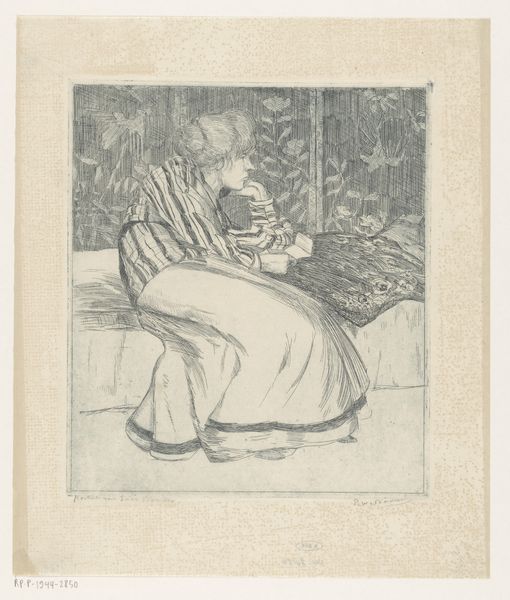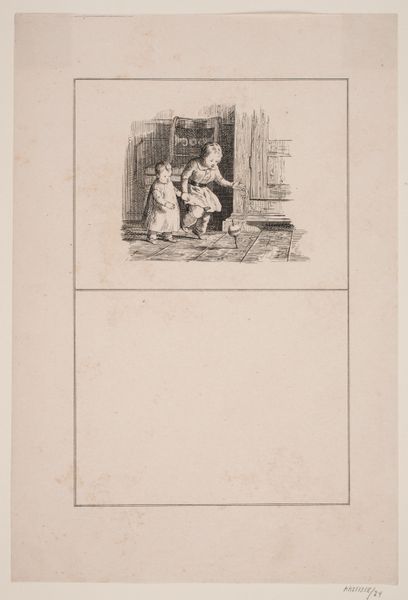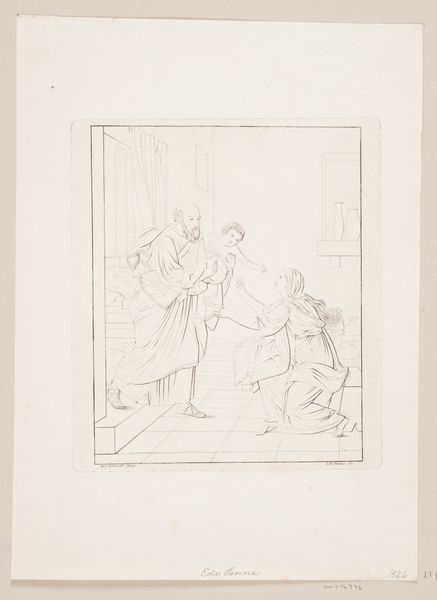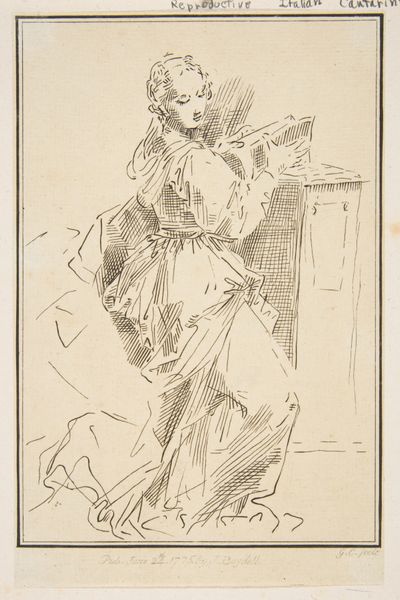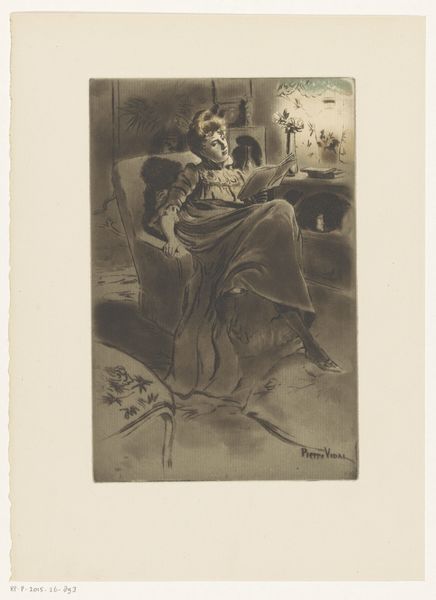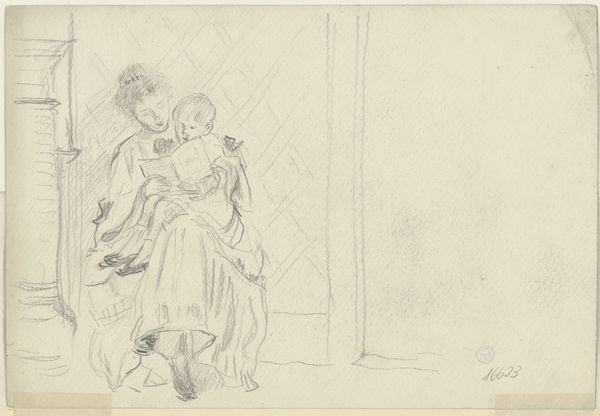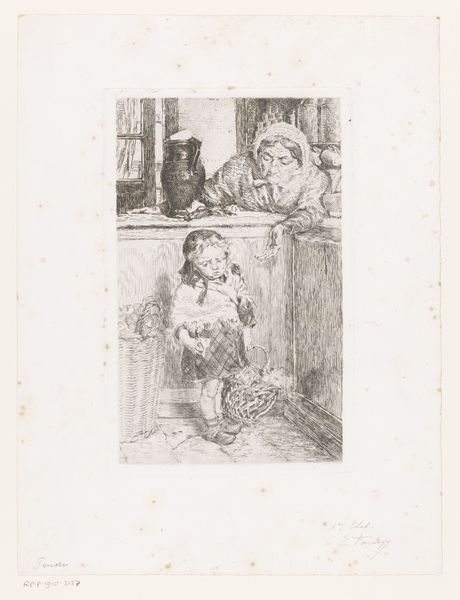
drawing, print, etching, paper
#
portrait
#
drawing
# print
#
etching
#
neo-impressionism
#
figuration
#
paper
#
intimism
#
symbolism
#
genre-painting
Dimensions: height 251 mm, width 181 mm
Copyright: Rijks Museum: Open Domain
Charles Maurin created this etching, "Woman Washing a Child in a Bowl," sometime between 1871 and 1914. Etching is an intriguing process: the artist covers a metal plate with a waxy, acid-resistant ground. Then, using a needle, they scratch away the ground, exposing the metal underneath. When the plate is dipped in acid, the exposed lines are eaten away, creating grooves. Ink is then applied to the plate, filling the grooves, and the surface is wiped clean. Finally, the plate is pressed onto paper, transferring the ink and creating the print. The etched lines create a sense of intimacy, perfectly suited to this domestic scene. The quality of the line has a direct effect on the way we perceive the image, creating a sense of immediacy. We’re invited into the scene to witness a tender, everyday moment, immortalized through the labor-intensive process of etching. Maurin's choice of such a time-consuming technique underscores the value of both artistic skill and the quiet dignity of domestic work. It invites us to consider the labor involved, and the ways in which art elevates these often-overlooked aspects of life.
Comments
No comments
Be the first to comment and join the conversation on the ultimate creative platform.
